Writing About Place
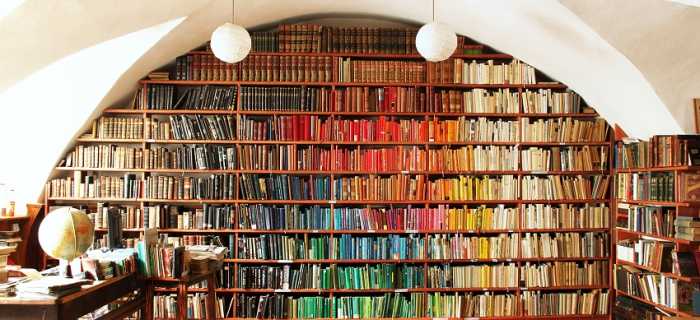
Techniques for writing about real places and settings effectively.
Regardless of genre, the use of setting in creative writing is of singular importance. However, there are further complications to the use of real world settings in your writing. Whether an author claims an alternative history, or a parallel world, there are particular expectations from readers about the way in which a setting in a real place is shaped. This following discussion is going to outline a number of recommendations for writers when considering how to best develop real settings.
Meg Mundell in her discussion of literary place-making comments that “every story takes place somewhere,” 1 and offers the five modes of place-orientated experiential techniques (POETs) as a structure for writers. Mundell’s model is a practice-based framework designed to help with the process of literary place-making. As a set of techniques it is well considered and offers useful advice specifically to those writing in real places.
The five POET techniques are Retrospective, Immersive, Collaborative, Vicarious and Nebulous, and will be unpacked in more detail through the following discussion. I will also discuss some perceived complications, adjacent values, and demonstrations of application. This discussion is designed to offer writing advice, but is not a step by step writing process, rather I invite the reader to take from it what would best benefit your own writing.
POET One: Retrospective technique
The first technique Mundell outlines concerns the harnessing of place-based personal memories. Both recent and older memories can be utilised and can often be a powerful source as our memories are not the visuals alone. Rather memories come with additional sensory and emotional information that can help an author provide a setting with more than just description. The retrospective technique, Mundell states, is drawing on autobiographical memories of place.
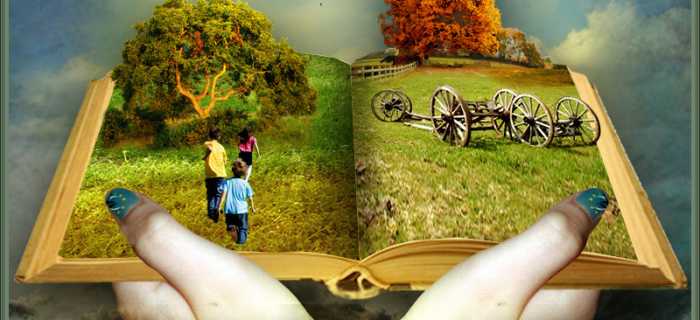
It is easy to see the value in starting here. Most authors will draw from their own experiences when developing their narratives anyway. This may not correspond directly to the plot or characters, but rather is often utilised in a myriad of ways throughout the stories. For instance, an author could consider the inclusion of a particular habit that takes place in a certain setting. Such as crouching down to run their fingers through the sand when they visit the beach. Or it could include a preference by a character for a certain season or time of the day. Even without noticing most authors will utilise their own preferences and memories to populate a narrative’s setting.
Memories, as mentioned, are incredibly powerful. It is not just the visualisation but the encoded states that accompany these. For example, when trying to utilise the setting of a windswept coast in the narrative, a writer may remember the coast line where they grew up. This will be encoded with polysensual information such as smells and tastes, the feel of the cold air on their skin, or how the salt stings sunburnt skin, or how cold the water is first thing in the morning. It will also be populated with corresponding emotions, such as pleasure, joy, or even grief and despair. This is a rich place for an author to draw from to help create settings that resonate meaningfully with the reader.
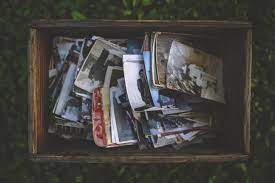
A retrospection does not need to rely upon memory alone. Photographs, video, even collected items from visiting these places can be useful. They can help clarify descriptive details, such as the specific type of blue of the ocean in the morning. They could also provide context for memories, such as exactly where something is located. This can be useful to then prompt further research into that place. They may also work to jog memories that have faded with time.
There is power in harnessing these personal memories. At times it can be easy as a writer to focus on the plot and dialogue, to the degree when a scene becomes merely talking heads in a vacuum. Retrospective techniques invite the author to immerse themselves within a place. To feel and exist in that place. Polysensual inclusions in writing are important, these refer to the use of senses in writing, but more specifically the use of multiple senses (as opposed to just sight, which is just description) when creating place. 3 By drawing not only on sight, but also on the sound of the crashing waves, the smell and taste of salt in the air, the feel of the breeze on the skin, all of this creates a more meaningful sense of place than simply describing a blue ocean.
POET Two: Immersive technique
The immersive technique is the direct encountering or experiencing of a place. This refers to the use of site visits by the author themselves. This has already the obvious limitation of access. A site that is difficult to access, especially in a Covid world, can limit the availability a writer has to the immersive technique. However, this limitation is confined to very specific places. For instance, I may not be able to visit a market in Delhi easily, but I can visit both in-closed and outdoor markets near my home. No, I am not going to be able to capture the resonance, the very flavour, of the real experience, but there are commonalities that I can access. To divide this into two categories I want to examine immersion in specific place and immersion in general place.
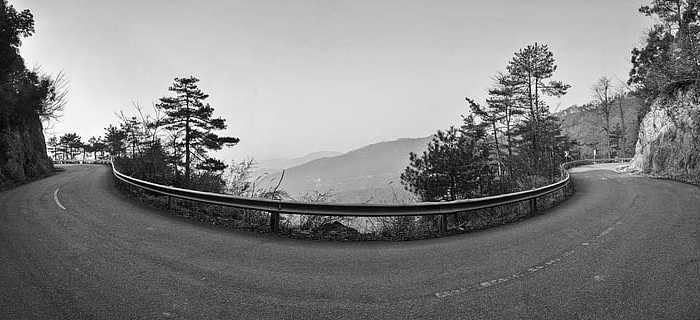
Immersion in specific places
Immersion in specific places refers to the ability to actually visit a location. Mundell refers to this as the primary purpose of this technique and highlights the importance of accessing “an immediate sensory and emotional engagement with place.” 4 This is a powerful experience, to be able to stand in a real place and just be in the moment. This can be especially powerful when we consider very unique opportunities, such as visiting the pyramids in Egypt or to go snorkelling at the Great Barrier Reef. Such real experiences would be hard to mimic even through the viewing of film, documentaries and photographs of that place. It is also helpful when visiting such specific places to create your own documents that can be used throughout the writing process using the retrospective technique.
The immersion in a specific place can also be about capturing specific themes, tones and polysensory information that are unique to not just that place, but the specific time you are there. For instance, visiting the highlands of Scotland is very different in summer and winter to the degree that it can feel as if they are completely different places. The contrast of the place to also the writer’s own sense of place is very important. To understand and perceive a different cultural or historical location can be hard to experience without being there, without experiencing the “culture shock” for yourself. These are experiences that make it hard to replicate in any other way.
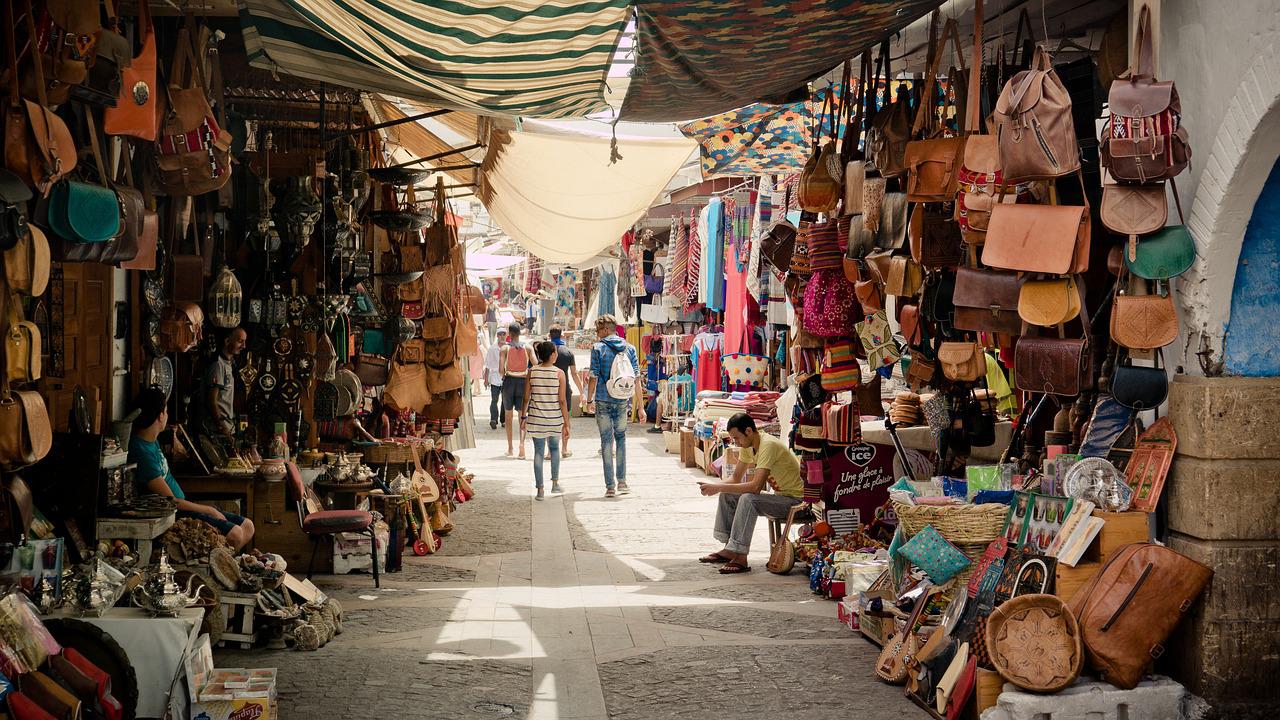
Immersion in a specific place is also about time. To visit the Cairo souks for the day may give a small snap shot of that place, but to spend a month visiting at different times and with different people would begin to help capture the essence of the uniqueness of these bazaars. Immersion can also offer the access of the collaborative technique, where talking and getting to know the people in a place can help shape an understanding of what it means, its very spirit. Finally, immersion in a specific place can also be a place the writer has lived their life, a place they have seen every season with, a place that is resonate already with their lived experiences. This is an immersion that is hard to replicate for any other writer.
Immersion in general places
However, as mentioned, a writer cannot always access a real place, and not always for a long enough period of time to develop a deep understanding of the essence of place. There are other techniques, such as retrospective if you’ve visited before, or collaborative by accessing other’s experiences, that can be used to off set this. However, this does not diminish the importance of drawing on immersive techniques.
A story is made up of a hundred small places. The larger setting may be Cairo, but there will be cafes, streets, museums, parks, waterways, farms, lounges, kitchens, bedrooms, and more. A hundred little places that all have their own construction and add to a larger real sense of place. An immersion in general places can help support the construction of these. What are the smells and sounds of a café? How does it feel to stand in a park in the middle of the city in the middle of Autumn? What ways do people set up their bedrooms and what does this say about them? An author can engage with real places in an immersive manner wherever they are.
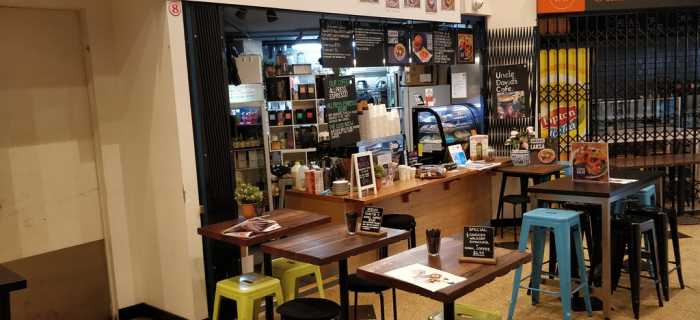
What then is the act of the immersive technique? The act of immersion is captured well in its definition. It is first to have an “absorbing involvement.” 5 What does this mean? It means not being on your phone, not thinking about what to have for dinner. It means actively working through a set of observations: what do I see? what makes this place unique/special/important? what do I feel/smell/taste? what are the levels of sound present; obvious, ambient, distinct, uncommon? The writer needs to be absorbed in the place and focus only on the recording of the place. Later visits it can be useful to then picture how your character/s interact with the place, but for the first visits it needs to be an absorbed involvement.
Secondly, it is “based on extensive exposure to surroundings…that are native or pertinent to the object of study.” 6 This is more referring to being immersed in learning, but this can apply to the writer. We are making an extensive study of place. This refers to the need to return multiple times to the same place to learn its different moods. It is helpful also during these processes of immersion to keep autoethnographic (auto – personal experience, ethno – understand experience, graphy – to analyse) 7 notes of your own thoughts and experiences of the place and reflect upon your interpretation of place based on your own personal history. For instance the emotional tenor of your writing about a particular park could be impacted by the fact you were dumped here by your greatest love. This does not diminish the value of your observations, but it needs to be reflected upon that this could influence your construction of the sensory elements of that place. For instance, when describing the park’s dreary, miserable environment, this is perhaps not the place to set the most uplifting part of your story.
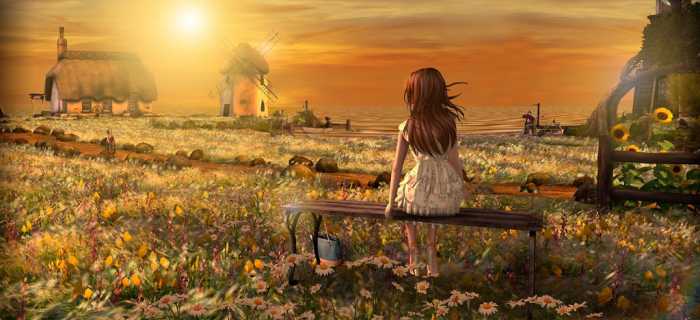
POET Three: Collaborative technique
The collaborative technique addresses some of the issues raised in the immersive technique as it utilises sources and people that already exist. Mundell explains this technique as “tapping into an accumulated stock of place-based cultural knowledge.” 8 This can include the access of intertextual sources such as written or visual artefacts or interpersonal sources such as interviews, conversations and so on. There are three great source accesses that all writers have for collaborative use, and that is the internet, already published stories, and the people in their lives.

This technique is also important as it is the first opportunity for the writer to move beyond their own perspective. Retrospective and immersive privilege the author’s own experiences and context, which is a valuable source for all writers, but is limited when considering the diversity of perspectives and experiences that a story should include. Place is a multifaceted thing, it belongs to everyone and it is not experienced in a singular, linear manner. Collaborative as a technique is important in addressing this concern.
There are of course limitations to this approach. Firstly, a writer needs to learn to operate outside their own echo chamber. A story where everyone has the same background, same point of view, and same experiences is not particularly interesting. A writer needs to read outside of their preferred genres, they need to watch different things, and they need to talk to different people. This can often be framed through the importance of research. Most authors conduct research for their writing. Not necessarily to the degree of being academic research, but they explore sources for historical information, cultural perspective, to find other experiences they have not had. A beginning place is often film and novels as these help show social uses of shared spaces that a writer can draw from. This is also the area where there is an opportunity to apply these techniques to a secondary world story. For instance, it is unlikely that a writer will have an opportunity to experience outer-space for themselves, but through accessing stories, film, even lived experiences of real astronauts, a writer can access shared understandings of this place.

Collaborative techniques also open opportunities to engage not just with place, but with the people that populate them. Ask five of your friends what the beach means to them and they are likely to give you five nuanced experiences. It is also an opportunity to make use of artefacts in the same way that is done retrospectively; that a writer can make use of artefacts such as maps, webpages and photos, to explore a place. To collaborate is to experience place through more than a writer’s own eyes, and this can only enrich a narrative.
POET Four: Vicarious technique

The vicarious technique can be understood through a number of points, but at its heart it is the act of empathising with place. The writer through their vicarious emplacement of themselves into a place, can “mobilise perspective-taking and narrative empathy to help emplace characters within the story.” 9 This is the act of feeling about a place by imaginatively inhabiting the place through the body of the character. We, the writers, feel how this place feels through their own context and experiences. This is where instead of the park being where you were unceremoniously dumped, it is the park the character remembers swinging on their father’s arm in. The place, its setting and environment, may not change, but the resonance of the emotion can change.

This technique is about considering how the place can be used to position the reader’s experience. Mundell refers to this as “how stories resonate for readers, as the body and emotions become shared sites of understanding.” 10 A character that inhabits a place that can be experienced sensuously rather than simple described, works to provide the reader with access to a real experience in that place in that moment in the context of the story. This is more likely to activate the reader’s own empathy and engage them in the story. This technique is largely a part of the act of narrative writing, however, Mundell is right in calling it out directly. A writer needs to actively consider not only the character and the plot in this moment, but the setting and place. How can the setting be used to help evoke the tone? For instance, if the character is scared, this means different things if they are standing in a darkened dead end alley, or are in their kitchen at home, or are on a train during rush hour. The place can inform the plot, but it will also influence the theme and tone of the scene.
POET Five: Nebulous technique
The final technique is nebulous, both in name and approach. This is the technique that refers to, as Mundell states, “such slippery phenomena as dream content, ‘pure imagination,’ subconscious formulations, intuition, the sublime, the uncanny, hauntings, and genius loci.” 11
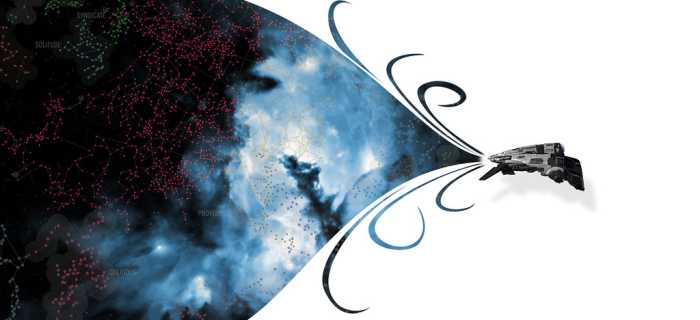
Many writers have said they drew content for their work from dreams, and indeed the surreal mashups of our subconscious can yield a fascinating sense of place. This technique can also refer to the combining of places that a writer has experienced or researched, or the combining of other’s experiences into a single place. It can also be the changes made to an experienced place to evoke fantastic inclusions in place, such as the appearance of a set of stairs in the middle of a forest that lead…somewhere. The nebulous technique allows the writer to challenge the limitations of the real into what they need for their narrative. This is the opportunity to draw on retrospective experiences and combine them with immersive techniques and research from collaborative techniques to make a place feel new, unique and that it belongs to your narrative.
This is often the purview of speculative fiction, but it can also be used in realism, and is very effective in giving a sense of place the thematic elements needed for that scene. This is also an area important for consideration for genre writers (fantasy, romance, crime, etc.) where a reader has a particular set of expectations around tonal and thematic elements that need to be present in the setting. Although a writer can play with these archetypes and expectations, it is important to be clear in the promises made to readers about setting. For instance, a gritty crime novel means readers expect late night police stations/detective offices, nightlife areas, run down districts, rain or dark cold nights (note the repetition of night). If a writer is not planning on delivering this they need to be very clear at the start, for instance the TV show Death in Paradise already uses the title to call out this setting change. But even in this idealised, azure ocean, setting most of the above settings are still present. The nebulous technique allows for creative freedoms, but it is still embedded within the creation of place and draws from the writer’s experiences of the other four techniques.
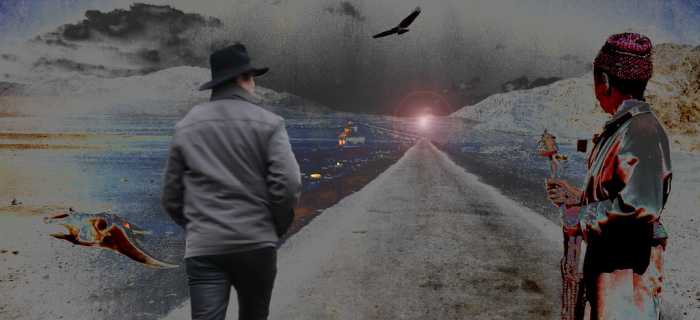
formulations, intuition, the sublime, the uncanny, hauntings, and genius loci” (Mundell, p. 10)
Writing place is of central importance to all writers. It is more than a backdrop setting, a cardboard cut-out to frame the characters, it needs to be embedded deeply in a polysensual manner that helps resonate with the reader experience. Meg Mundell offers the POET format for approaching and considering the writing of distinct places. A writer who utilises retrospective, immersive, collaborative, vicarious, and nebulous techniques when developing the settings of their narratives will hopefully find a construction of a rich, meaningful sense of place emerging.
Writers and readers, what do you think about writing about real places?
Works Cited
- Mundell, Meg. (2018). Crafting ‘literary sense of place’: The generative work of literary place-making. The Journal of the Association for the Study of Australian Literature, 18(1), 1-17. https://openjournals.library.sydney.edu.au/index.php/JASAL/article/view/12375 ↩
- All images are sourced from Creative Commons ↩
- Westphal, Bertrand. (2011). Geocriticism: Real and Fictional Spaces. New York: Palgrave Macmillan. https://doi.org/10.1057/9780230119161 ↩
- Mundell, pp.9-10 ↩
- “Immersion.” (n.d.). Merriam-Webster. https://www.merriam-webster.com/dictionary/immersion ↩
- “Immersion.” (n.d.). Merriam-Webster. https://www.merriam-webster.com/dictionary/immersion ↩
- Ellis, C., Adams, T.E., & Bochner, A.P. (2011). Autoethnography: An overview. Historical Social Research, 36(4), 273-290 ↩
- Mundell, p.10 ↩
- Mundell, p.10 ↩
- Mundell, p.10 ↩
- Mundell, p.10 ↩
What do you think? Leave a comment.
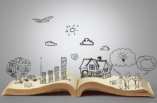


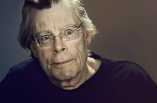



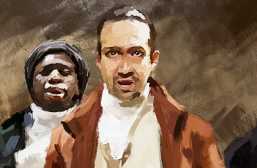



Much as I appreciate a well drawn setting, I feel it needs to resonate with the characters… otherwise it’s like sitting in the theatre after the actors have left.
Place in fiction often lingers more vividly after characters and the intricacies of plot have faded. Thomas Hardy’s The Woodlanders is my favourite novel for the setting more than anything – the isolated hamlet of Little Hintock. The novel’s central characters reflect the beauty and harshness of the land: the unsophisticated Giles Winterbourne is described as ‘Autumn’s very brother’ yet it is the same unsympathetic forces of nature which bring about his untimely death. Hardy’s Wessex is often idealised but it was, as Hardy showed us, often a brutal place in which to live and work – the young Jude Fawley has a premonition too early in life of rural England’s exhausted sterility. The pastoral world of Hardy’s novels often drained the life out of people just as the harsh deprivations of London did for Dickens’ characters.
I was thinking today of the possession of place which is so deeply ingrained in the British psyche: to possess bricks and mortar, to possess land, and yet English literature’s greatest literary achievements often depict characters who have been excluded from this process for one reason or another. Literature often provides an alternative world where many people can reclaim a sense of place and belonging denied to them if they haven’t subscribed to the mortgaged existence. The cost of not subscribing can often be calamitous and Hardy’s greatest achievement for me in Jude the Obscure was showing so powerfully Jude’s rootless existence and the cost to his ambitions for not having a fixed abode.
There is nothing redeeming about the places described in Jude and Hardy shows how warmth and shelter in this possessive-obsessive land is often found in a warm pub or in a train compartment. (And this cruel government is even make these small refuges inaccessible to swathes of the population.)
I would venture to say that it is place, more than character or plot, which tell us so uncomfortable home truths about the world we live in.
I thought place was a really interesting extra dimension in novels until I read Five Red Herrings by Dorothy L. Sayers when I was on holiday in Galloway. Sadly the book was as interesting as a railway timetable but I did learn just how many trains used to run across vast areas of the Southern Uplands now completely devoid of public transport.
I tend to not write about real places because I’m way too lazy about trying to get things right and accurate.
Yes: our memories are hearing; taste; touch; smell; vestibular; interioception and proprioception.
Moving through a specific place at a specific time as a specific person – and then doing this with the focus character in the focused plot and their point of view/perspective.
I tend to use Collaborative Placemaking as an author.
For me, it is an issue of scale. I obviously use real places for the large scale (planet, country, state, etc) but as the scale grows smaller it becomes more fictitious.
For example: United States (real), Tennessee (Real), Nashville (Real), Lake Charles St. (fake), Metro Police Station 16 (fake), office of Detective Mark Able (fake), Middle left drawer of Able’s desk (fake), a photograph of his wife Dorothy standing in front of the Hermitage (fake picture of a real place?)
Using real places in fiction can be useful. A terrific aid to the writer in visualising the action and maintaining consistency.
Great writeup. Just remember writers, you are describing a fictional version of that place. You can’t expect the reader to know everything, so make sure to describe it as if it were totally made up.
But then you have to get all the little details right for all the people who live there/. 😛
I prefer fictional area in real place. Like fictional small town in real state.
Thing is, you really don’t need to get all the little details right.
Sure, the big details are important – like knowing whether the village is on the east or west coast so your characters can either see a sunrise or a sunset.
But nobody really cares if you get the distance between two buildings slightly wrong, or if the snicket down the side of the pub doesn’t actually lead to a small stream at the edge of a wood, but to a carpark with a load of bottle reycling bins.
There’s a Jackie Chan movie set in Melbourne (sorry, I can’t remember the name). It’s pretty obvious to locals that when Jackie goes up an escalator on one side of the city he shouldn’t pop up on a street at the other side of the city, but it didn’t spoil my enjoyment of the movie at all.
I like how in one scene in Umberto Eco’s Il pendolo di Foucauilt (I’m not sure if that is the correct title as I am not native English/Italian speaker) there is a dialog exchange between two monks who are walking on a real-life-based street, and the length of the dialog is exactly same as you would actually have realistically if you were to walk there. Though I dont think that amount of dedication is necesarry.
Hi!
The English title of that book is indeed FOCAULT’S PENDULUM.
[some of us think Michel but this is a much older Foucault – like Middle Ages ancient/medieval].
Very veridical, isn’t it?
Have admired Eco since I was a little girl and NAME OF THE ROSE became popular.
To me, it comes down to what kinds of creative liberties you plan to take in your setting. By that I mean, don’t put the onus on me to know when you are writing fiction and when you are pulling from reality. Don’t use real street names if you plan to make up street names too, don’t use real neighborhoods and also invent new ones, etc.
Be aware, people will try to catch you for pulling from reality without doing your due diligence, e.g. getting simple details about the town wrong, like driving past landmarks in an impossible order (Sleepless in Seattle).
I have used real cities for modern fiction. I set mine in Toronto because I can reference a realistic space in my mind as I write. However I have always liked the tongue in cheek of GTA where they are clearly set in Miami, or New York, etc.
Place makes so much sense as a writer.
It’s the double-edged sword of being aware of who we are and where we are: To be able to know what is, has been and will be disassociates us from our present reality: Our connection between what we are and where we are. But it’s a powerful tool to be able to “reality-generate” and inform on what our future might be and therefore change reality to reflect ourselves?
hmm, that would make a good poem…
The Age of Misrule series by Mark Chadbourne made use of a lot of real places, both well known and obscure – everywhere from Stonehenge to the Saint Lawrence Church and the Hellfire Caves of High Wycombe. It added a lot of interesting flavour to the stories.
If you’re going to use real places in your writing, get them right – use places you can either visit or learn about in extensive detail.
I’ll use real cities or make up my own depending on what serves the particular piece I’m writing.
My Sci fi project I’m currently working on is a combination of both- assuming much of northern California has urban sprawled it’s way into one metro area. The last thing I wrote took place in a fictional small town. In general I’ll use real places by default unless I have some narrative reason to make something up just based on the principle that it’s always best to write what you know.
I find writing places to be extremely difficult, even when I’ve been there or studied it on Street View, so I can only imagine trying to invent a new city from scratch.
It’s just hard to be consistent with scale, detail, and functionality of the location. The final Hunger Games book is (IMHO) a great example of failure in that regard, and it feels like most locations only consists of about five blocks and maybe twenty people total.
Using a real place can also be tiring if it is over explained. I, a Pittsburgh resident, once read a book set in Pittsburgh and every paragraph seemed like going redicilously through the Google Maps streets and landmarks. But if you make up a city you also run the risk of overbuilding the world.
In my own short fiction I have a fascination with geography and location, but I try to take an approach of “do research, get facts straight, then make implications from there.” I wrote a bit about a little town I’ve never been to and I made sure to research demographics, population, etc. to place my character where he would have been and make sure my details lined up with reality. Then, from that information, I built the culture and atmosphere and metaphor of the town outwards from the cold hard facts.
Using an actual place just makes things harder. You have to do more research and people will nitpick the details.
Me, personally, I write about places that I’ve actually been to but don’t know a whole lot about. I have been to the Bay Area but never did some in-depth exploring of the area. I did visit a lot of the little cities in San Mateo County and so most of my writing is based on the places that I have actually been to and know a little about.
I didn’t do a lot of Exploring of S.F. but did go to to Pier 39 and Fisherman’s Wharf quiet a few times. I also did walk Market Street a few times and went to the Westfield mall. So majority of my writing revolves around those areas that I’ve been to and sites that I had seen before. It makes writing WAY more easier when you’ve actually been to a place and heard the sounds and seen the sites in person.
Knowing where something is is not the same thing as being a resident.
I personally prefer generic/imaginary cities unless it’s super iconic, eg Paris, London, Munich.
Yes, me too. Or rather, if someone sets it Smalltown, Ruralia I really don’t need a vast amount of details about the actual Smalltown, Ruralia. It can end up feeling very parochial and even exclusionary if the tone isn’t right.
So I tend to avoid names and go for things like “main road”, “high street”, “upmarket suburb”, “central park”, “town square” when describing geographic features within a real town. But usually mine are invented, even if they’re based on something.
I’ll take Smalltown, Ruralia. I’ll rename it Littletown. I then have the freedom to add and subtract what features I like.
Most of my projects are set in different places of the world and so I did a lot of research with Google Maps/Earth, websites about those specific cities (not always big ones like New York or Tokyo) and there’s some I’ve been to too but it’s more for geographic purposes than to do a complete showoff of the culture and things like that (and my projects are also mostly set in the future so there is place for creation even there).
This is an interesting read! It would be fun to put some more of these ideas in the context of specific genres and see where there’s overlap or divergence in the usage of techniques. I loved where this was touched on in the nebulous section 😊
This is an amazing article that I will be utilizing in future writing projects. It is very well written and is very helpful for a writer. I didn’t even know there was a technique for writing locations, much less multiple.
I use almost exclusively fictional settings. Many of my stories take place in a city, but the city is either fictional or just vague. I don’t live in your standard big city, so I’m not all that familiar with any of them, so I prefer to invent fictional cities. I go the DC route where Metropolis and Gotham are both fictional cities but are based on New York, for example.
A lot of fictional things are based on/inspired by “real” things and aren’t expected to be 100% accurate. So writers, live a little bit and don’t barrier yourselves. 🙂
A while ago I had the idea of setting a story in my old high school, but for creative reasons/limits I decided to set it in the same world as my epic fantasy trilogy.
I read a book recently that took place in Washington. The author mentioned people heading from Portland to Washington and stopping in Eugene on the way. You can’t stop in Eugene on your way to Washington if you start in Portland. That one error made me suspicious of other geography and historical points from there on out.
My dad is writing a book right now and all the places are real. The only problem he has is finishing the story, like will the places still exist when he finish it.
The best advice given to me is to write what I know.
Very interesting article! I learned a lot about world building.
Authors have been writing about real places as long as there has been writing!
Real places help bring some realism to stories that I personally enjoy, but that’s just my personal bias.
I like books that set up place well, it allows me to enjoy the action that then happens there. I recall one book “Inside Out” that used place in a unique way that surprised me and made the book memorable. I thought it was occurring in an enclosed place on earth, but it was totally satisfying when it was revealed where we actually were. 🙂 Thank you for your essay, it is a really good resource. Place is almost another character in the story I guess, in as much as you need to keep track of where it is at and how it interacts with the action.
I generally go the demi-real method. My story does take place in California, but fake cities within it.
I would love to read a book set in my city even if the story was insane and made us all out to be evil villains. It would be fun to read!
It’s fun to imagine things happening in our real world. Most people have the ability to suspend their disbelief and understand that it’s just a story.
I’m rereading Philip Roth’s The Anatomy Lesson now where place has a center in the story. Much of the book is about the main character’s past at The University of Chicago. At about the midway point of the novel, he returns there and attempts to regain his youthful vitality.
Character and setting tend to blend together for me. The lines between the two are kind of blurred since an individual and his/her environment inform and mirror each other. Thank you for these helpful tips on how best to improve the immersive experience of one’s writing!
A good example of writing about place is “A Discovery of Witches” by Deborah Harkness is set partially in the Bodlian, University of Oxford. Just an example off the top of my head.
I think places like Oxford have sort of entered the public domain of places that are acceptable to set a story. Its instantly recognisable and its been around for so long and has been written about countless times before by others. Another story set in Oxford (at least for a part of a story) is Phillip Pullman’s His Dark Materials for example and I can assure you that the Oxford there does not match the Oxford IRL.
Yes, that is another one, although I would agree the “Oxford” in Pullman’s book is more some parallel universe type of Oxford.
I use real places down to the level of picking out hedges and storm drains!
I get pretty obsessed with making my settings match real world places. I wanted a water tower in one of my novels set in upstate New York, so I literally went searching for a neighborhood where one exists just like in my story and based it there. Google Earth has been a blessing.
I love that!
So glad I’m not the only one getting creepy with Google Earth up in here.
I think Patrick White’s town ‘Sarsparilla’ is a great name for a place.
I love learning new techniques for effective creative writing. These five techniques can unlock a whole new type of relationship between writer to reader. I resonate with this article because I always thought that any type of literature grants the readers an opportunity to travel around the world, learn different cultures, and maybe even discover themselves by the end of the story. And that is all due to effective writing techniques.
While it is true that everything happens somewhere, it is not true that every narrative has to include the setting. Setting can be expressed through feelings, and never mentioned at all.
Enjoyed this article, thoroughly!
I think it is interesting that you say that dreams can be a way of adding an element of surreality to the setting.
This gave me a lot to think about. Wondering if anyone has any thoughts on how to translate this into non-fiction writing? What aspects can we keep/what differences should we be mindful of?
Writing about a setting or place, or about a person (etc) in a place is much more easily (and believably) done if writing about what one knows. Unless the novel is fantasy, it’s generally not easy to imagine a place one has never been and put that in their writing authoritatively.
One interesting counterpoint to this framework could also be to think about the methodology of writing place—once one is enmeshed in the nitty-gritty of pen-to-paper or hands-to-keyboard perception seems to shift a bit. I find it helpful to consider how place can be induced from the pen as well as being approached in a more deductive way based on prior decision-making.
As someone interested in stories about fantastical settings, I haven’t previously tried the technique of visiting places to write about them, but this article has provided me with a new perspective on this technique. I am intrigued by Mundell’s idea of spending time in a place to capture the “feeling” of being in that place, as opposed to only focusing on the objective aspects of it, and how this can be applied to writing about similar settings, real or imagined.
I think there is such a risk writing about real place settings. If the representation doesn’t align with the readers view/expectations you can lose them before they are hooked on the central story arc.
Michael Crummey also gave an excellent lecture about this that was turned into a book called “Most of What Follows is True: Places Imagined and Real” that discusses his experiences and ideas about setting fiction in place.
Thanks for sharing that Emily – I will check it out 🙂
Very interesting topic ! With experience the reader may spot when a scene is juxtaposition of idea bricks (just a decorum) or a coherent piece. It always fascinated me how a writer can put anchors in our head to see a place but only to make us feel something completely different than just a background. It is even perfect at some point when you forget about it and just feel emotions.
Quite a helpful technique for writing a place!
This gave me a lot to think about. Wondering if anyone has any thoughts on how to translate this into non-fiction writing? What aspects can we keep/what differences should we be mindful of?
In a way I don’t think the approach is too different to writing fiction in a real place, you would disregard any of the advice that indicates an imagining but the same principles should be the same.
One thing that I am engaged in currently is a geocritical review of a real place, and this means not only am I going there and capturing lived experience, I am also engaging with what is already written about that place. For real NF this would be looking at historical documents, local websites and tourist sites, local papers etc. that help capture a sense of how the place has changed and how it is used.
I hope that helps a little 🙂
Really interesting and thoughtful piece of writing here. Thank you for contributing. Got me thinking.